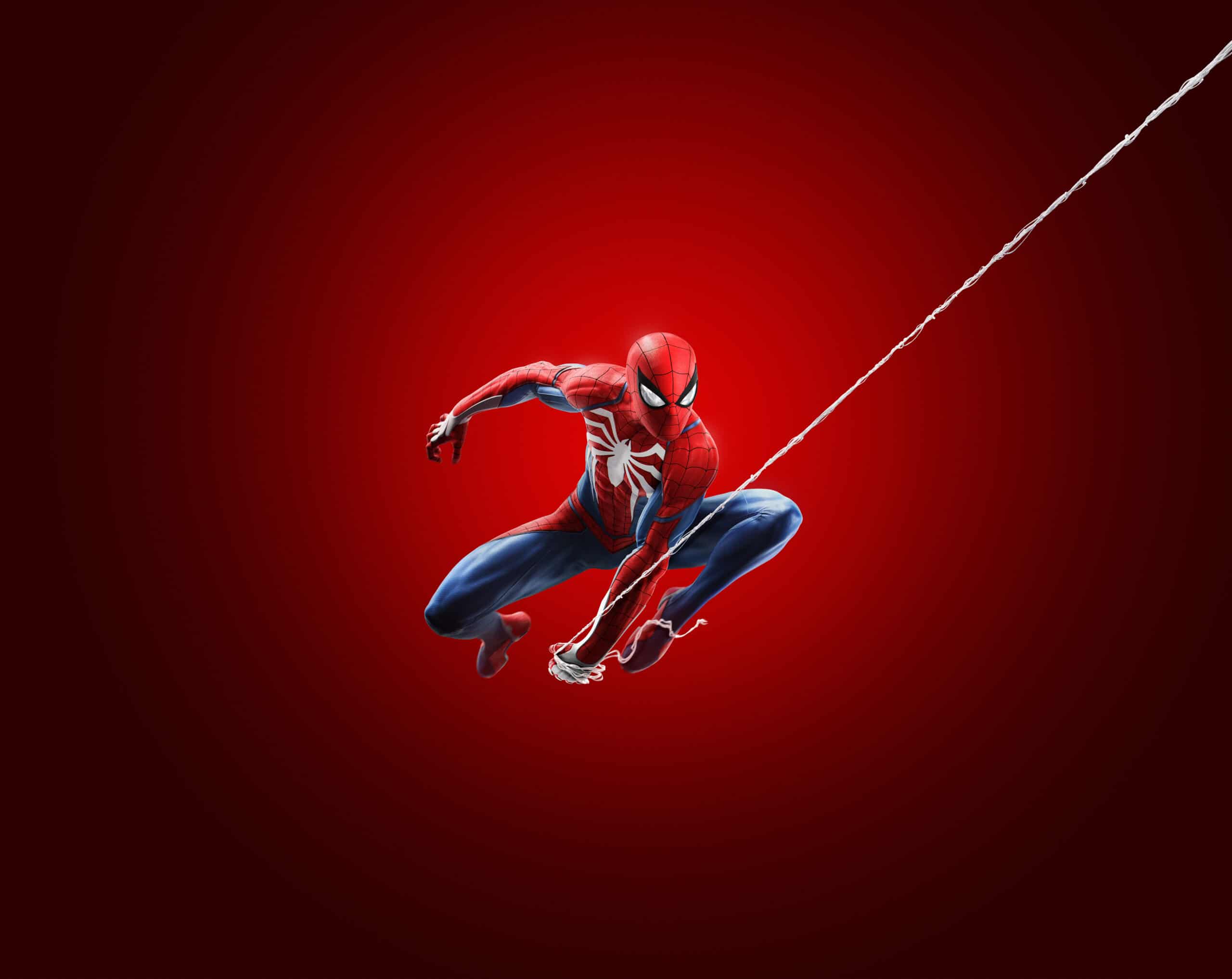Spider-Man has a long and complex history in video games, with his first title released over 40 years ago. Today we are breaking down every game in the Spider-Man franchise and putting them for your convenience. Be sure to check out each title; you may be surprised and hear about some games you never knew existed.
Complete List of Spider-Man Games
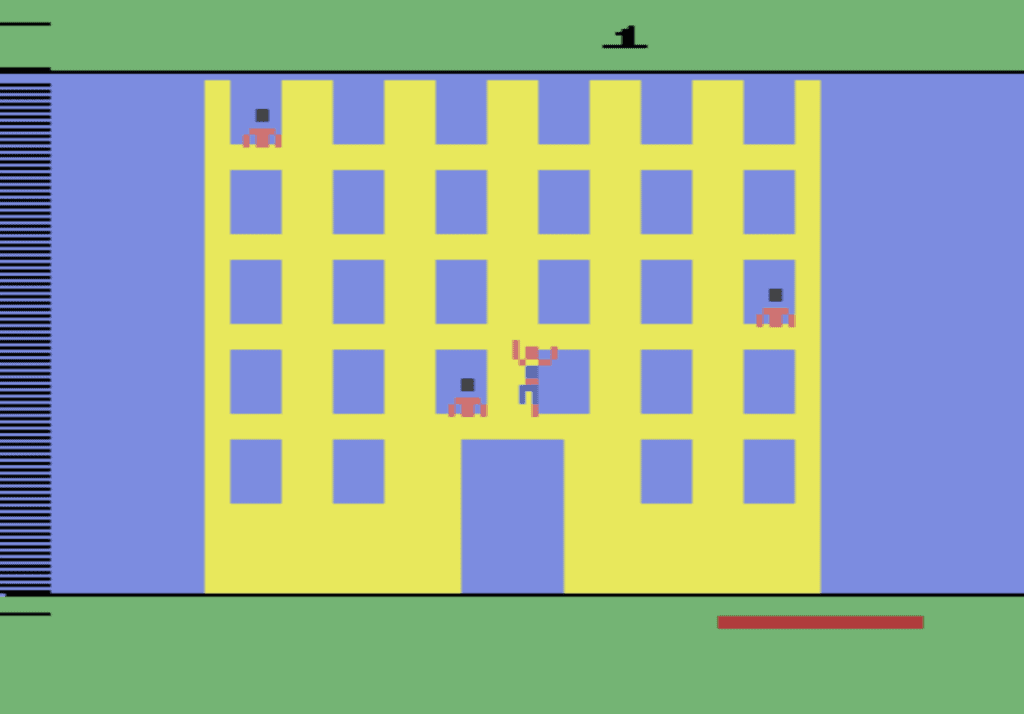
Spider-Man (1982)
Spider-Man is the first game about the crime-fighting spider featuring his arch nemesis, the Green Goblin. The game was released on the Atari 2600, with simple gameplay mechanics. The story follows Spider-Man as he attempts to save the Empire State Building from exploding. Norman Osborn, aka the Green Goblin, escaped from prison during a riot and planted a “Superbomb” in the building.
As with most Atari 2600 games, the mechanics are simple due to the limited controls. Players control Spier-Man as he climbs up the Empire State Building with the help of his web shooters. You will take out thugs in widows, avoid bombs, and bypass the Green Goblin to reach the bomb. While the levels can be completed in a few minutes and are a neverending cycle of the same level, it can be addictive to beat your high score and get faster at traversing the building.
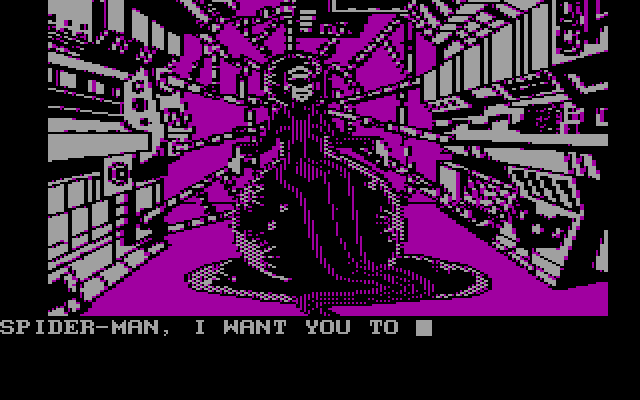
Questprobe: Spider-Man (1984)
In Questprobe: Spider-Man, players are imprisoned in a giant skyscraper as Spider-Man and must find their way out. Players encounter villains like the Lizard, Sandman, Madame Web, and more along the way. You’ll have to collect gems, solve puzzles, and defeat opponents to beat the game.
This game is more advanced than its Atari predecessor, with players inputting their own commands to control Spider-Man. By entering “Spider-Man, I want you to” along with a command, players could think creatively about how to solve problems. While the graphics and speed of the game leave a lot to be desired by today’s standards, the input commands are impressive and bring much-needed depth.
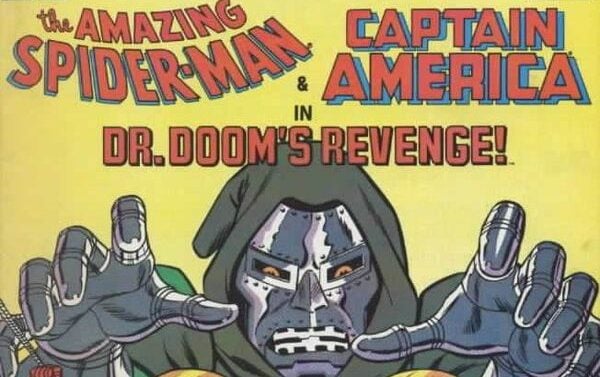
The Amazing Spider-Man and Captain America in Dr. Doom’s Revenge (1989)
The Amazing Spider-Man and Captain America in Dr. Doom’s Revenge is a simple sidescrolling fighting game. Players take on the role of Captain America and Spider-Man as they battle against a rouges gallery of villains. The game consists of one and one fights that alternate between the two heroes. Compared to previous entries, the game has a good fighting system and excellent graphics for its time. However, it has been criticized for being too slow and linear. It was voted one of the worst PC games ever in 1996.
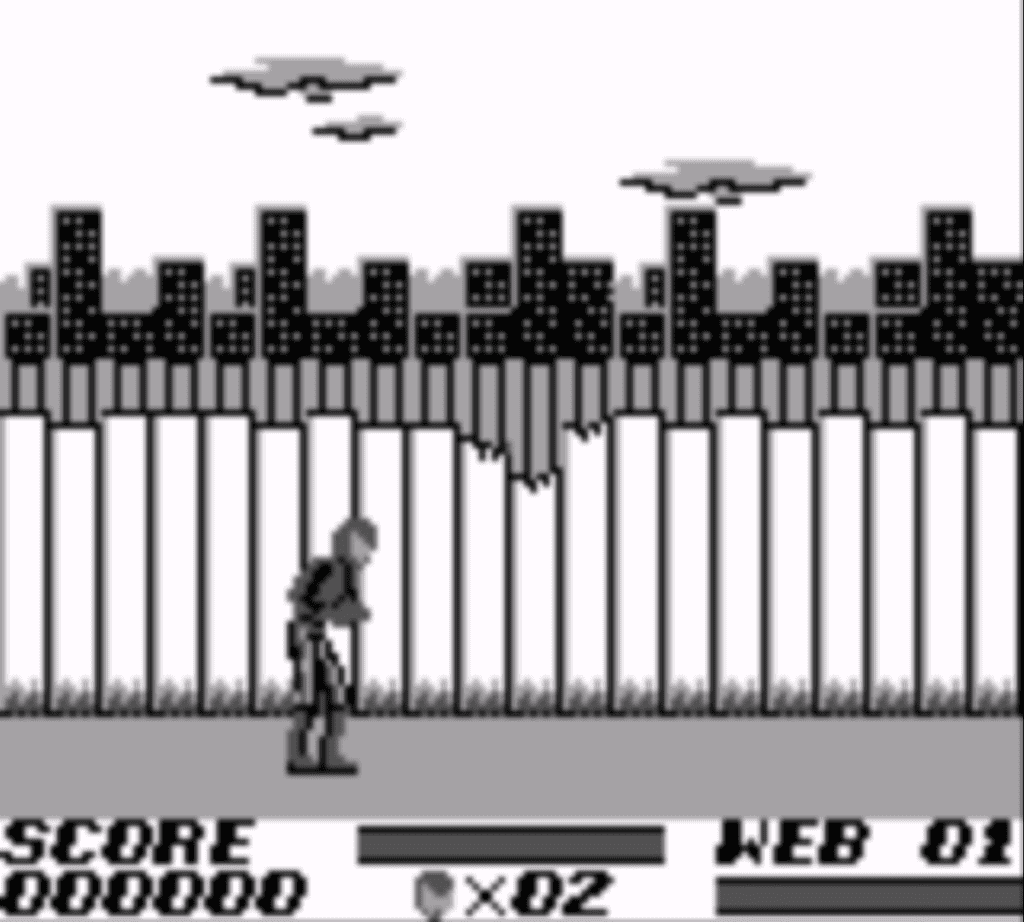
The Amazing Spider-Man (1990)
The Amazing Spider-Man follows Spider-Man as he rescues Mary Jane from Mysterio. The game features several movie references due to Mysterio’s character but is noticeably downgraded. The downgraded graphics were explained because the development team wanted more animations and complex puzzles for Spider-Man to solve. Less detail meant the game would run smoother on desktops. While the game is slow, with Spider-Man walking like a toddler, it features impressive puzzles for its time and is much larger than previous titles. It was later released on the Game Boy but featured Venom, Doc Oct, and other villains instead of Mysterio.
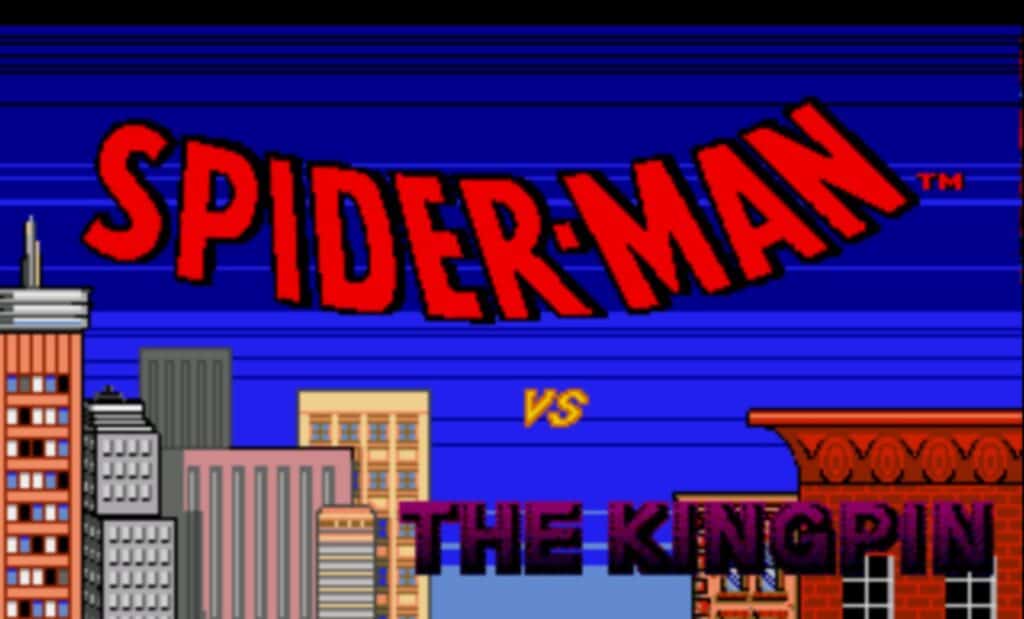
Spider-Man vs. The Kingpin (1991)
Spider-Man vs. The Kingpin is a beat ’em-up game that captures Spider-Man, unlike any other game before it. Spider-Man battles villains to obtain keys to disarm a nuclear bomb that Kingpin plans on detonating. The story here is more complex and features cut scenes with voice acting.
In terms of gameplay, Spider-Man is fast, with responsive and fun combat. The web swinging feels natural and is integral to the mechanics that complement the combat. The game resembles future titles in-depth and is ahead of time. It also features an amazing soundtrack and alternative endings.
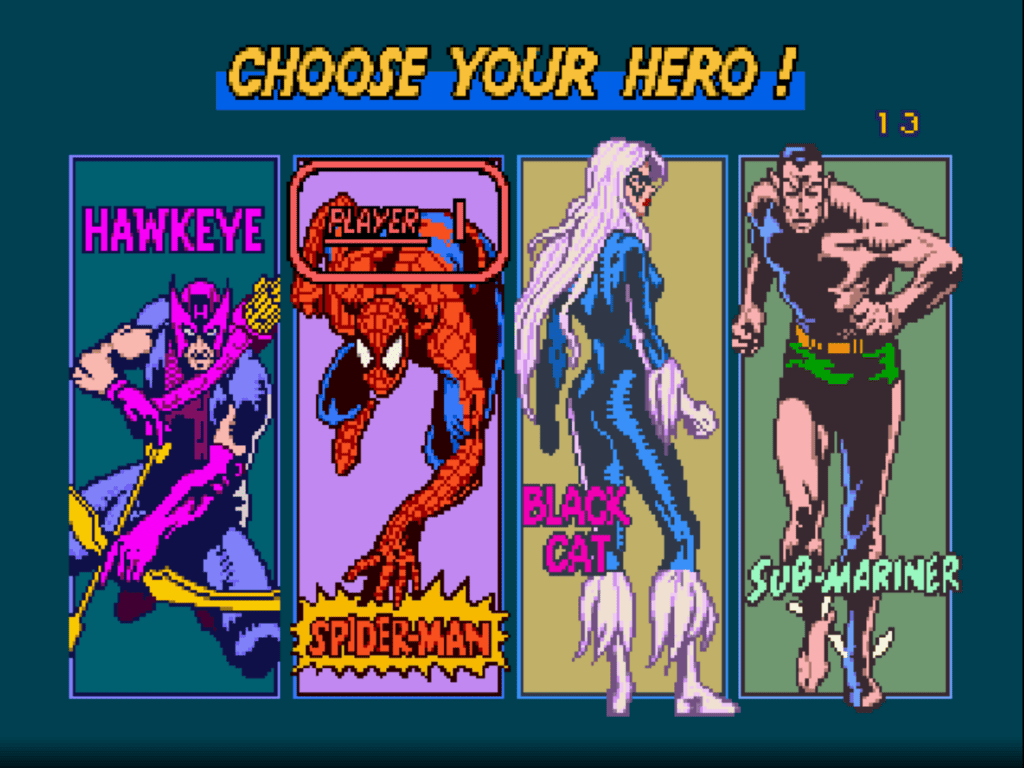
Spider-Man: The Video Game (1991)
Spider-Man: The Video Game is one of the most successful arcade games of its time due to its character sprites and four-player capability. The game is a typical beat ‘’em-up that follows Spider-Man, Black Cat, Hawkeye, and Sub-Mariner as they attempt to stop Kingpin and Doctor Doom. The graphics are very impressive and still hold up to this day. The fighting system features responsive controls and an array of abilities to use. While there are repetitive levels, what stands out is the boss flights which are engaging and can eat your quarters if you aren’t careful.
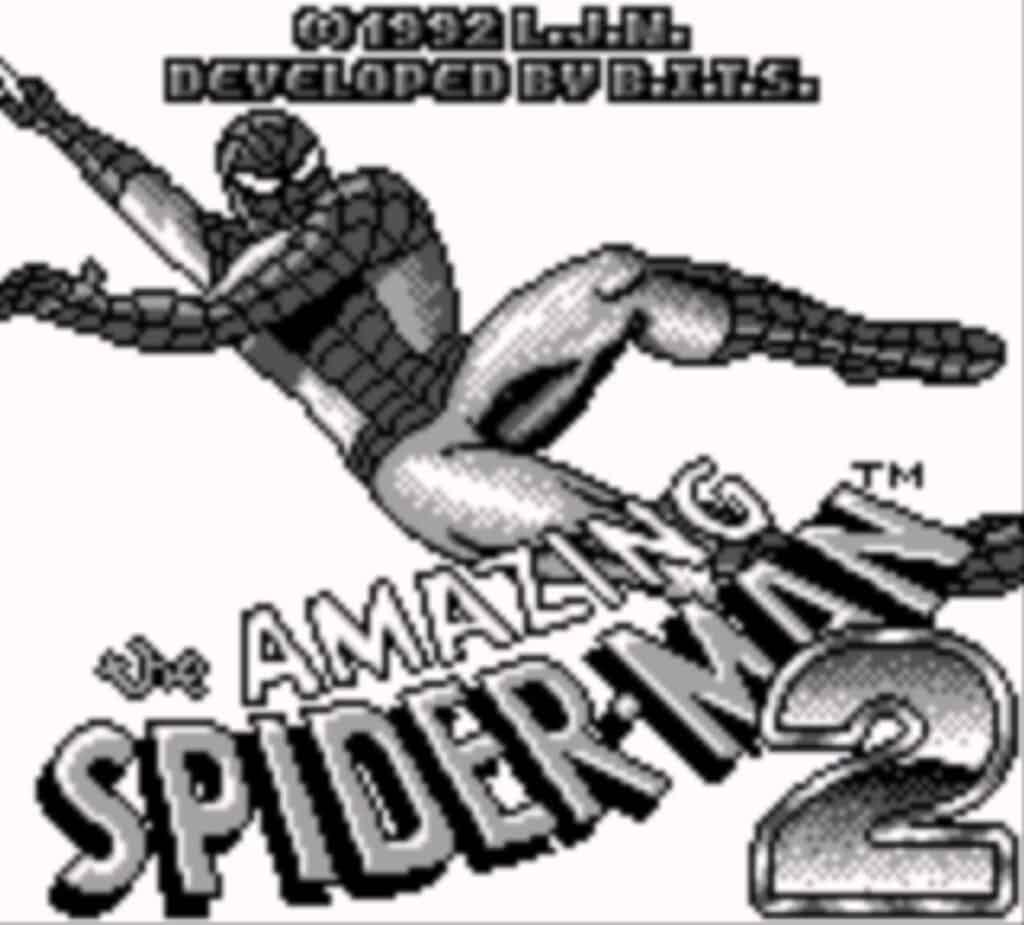
The Amazing Spider-Man 2 (1992)
The Amazing Spider-Man 2 is the sequel to the 1990 game of the same name. The gameplay is similar to its beat ‘em-up style of combat but features more puzzles and collectibles that must be obtained on each level. Unlike the original, however, the combat and movement are much faster, which makes for a more engaging experience. The game’s story follows Spider-Man after he is framed for robbing a bank. He must go after the villains that set him up and put a stop to their reign of terror.
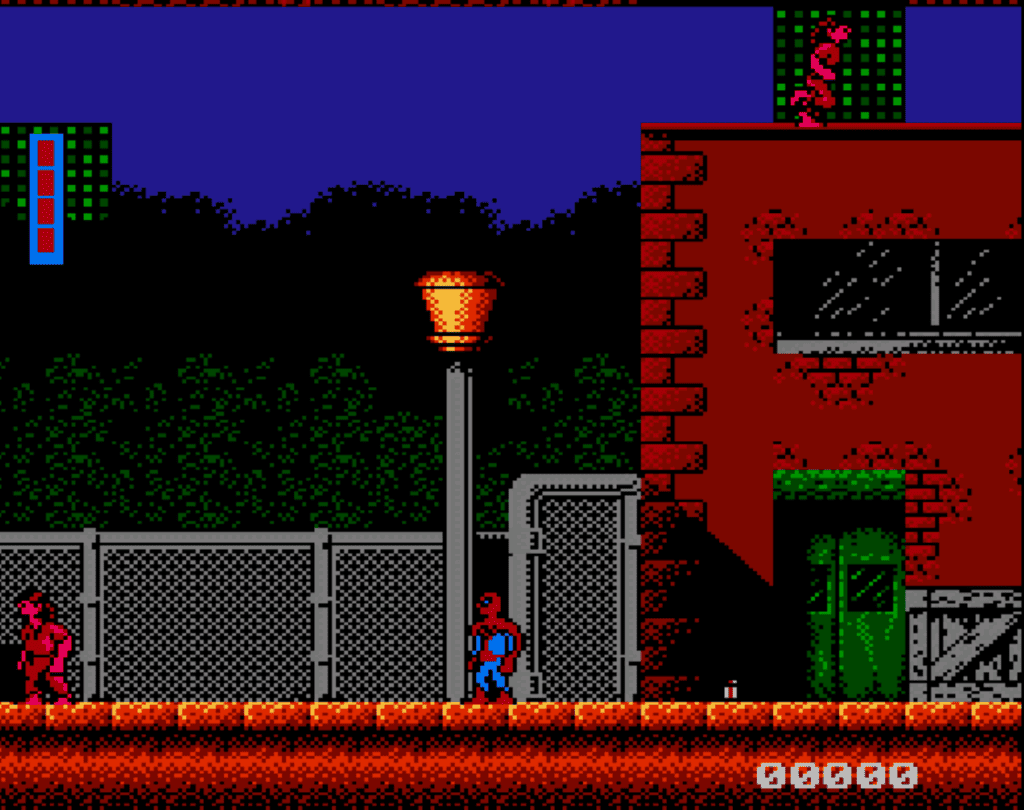
Spider-Man: Return of the Sinister Six (1992)
Released on the NES, Spider-Man: Return of the Sinister Six received mixed reviews after its launch. The game boasts impressive graphics for the console, but its combat and controls leave much to be desired. While punches and kicks look like they will connect with enemies, they can often times whiff and leave the player vulnerable. It wouldn’t be so bad if the game offered players more than just one life. The game features six levels to play through, with the end of each containing a boss fight against one of the Sinister Six. Players can expect to see Electro, Sandman, Vulture, Doctor Octopus, Mysterio, and Hobgoblin. Compared to previous titles, Spider-Man: Return of the Sinister Six needs to improve in a lot of areas.
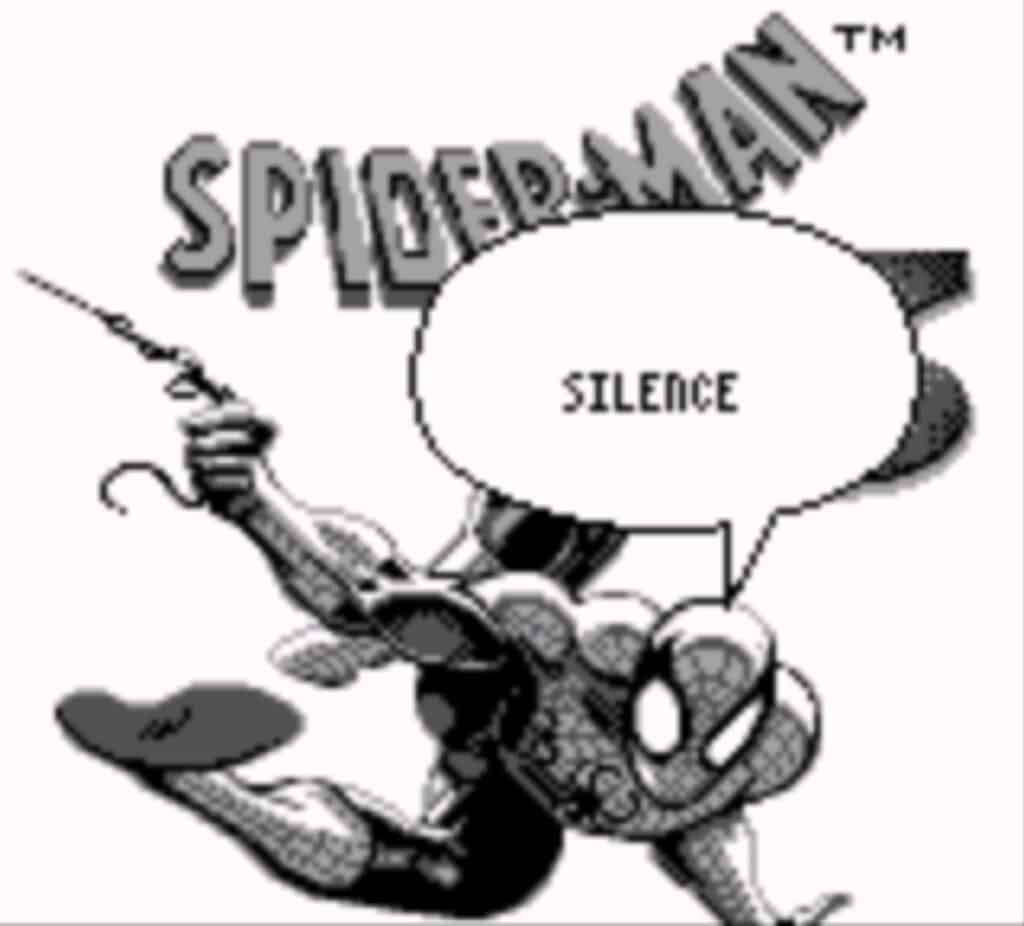
The Amazing Spider-Man 3: Invasion of the Spider-Slayers (1993)
The third and final installment in The Amazing Spider-Man series (by the LJ developers). The game follows The Amazing Spider-Man 2 in terms of level design and combat, as both were released on the Game Boy. However, the game revived criticism due to its graphics, which were hard to distinguish, complicated controls, and error screens. It features high-tech robot enemies along with iconic villains. Due to its lack of innovation and attempts to fix old problems, it fails to make an impact.
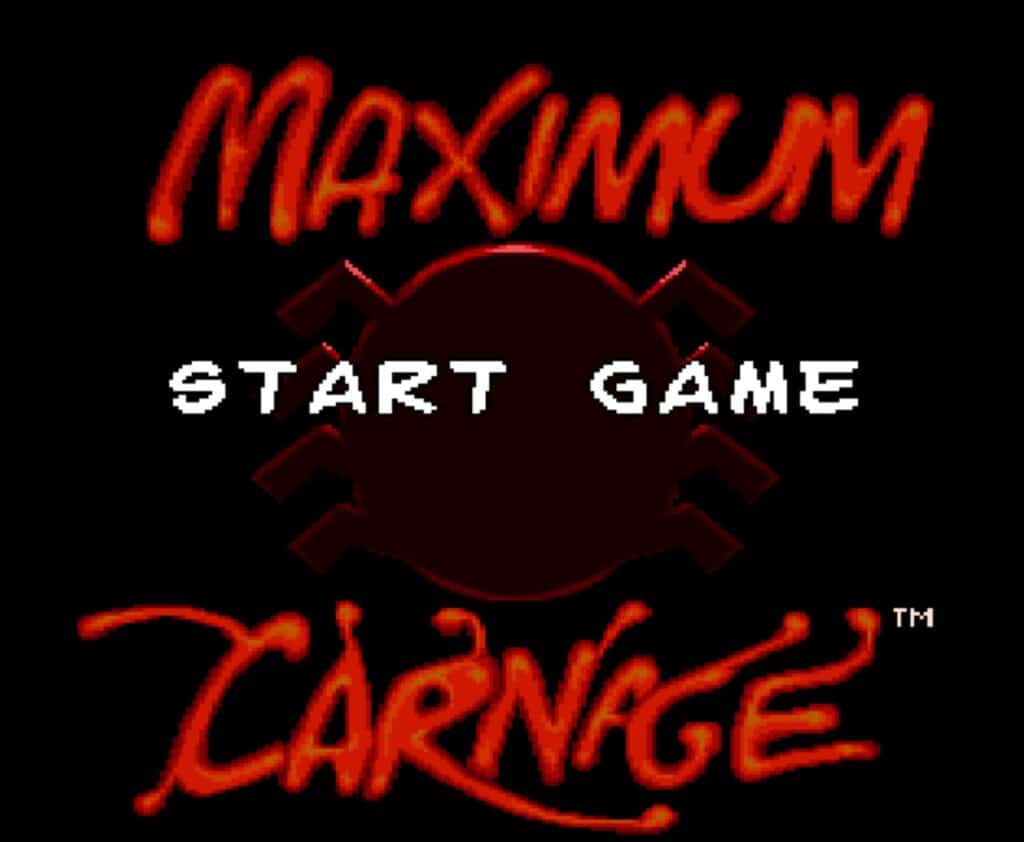
Spider-Man Venom Maximum Carnage (1994)
Spider-Man Venom Maximum Carnage brings the arcade-style beat ‘’em-up to home consoles with its release on the SNES. Its graphics are a noticeable downgrade from arcade machines from years prior and features mediocre controls. However, despite its repetitive nature, it gained a cult following years after its release. Fans praised its soundtrack and difficulty and believed it to be one of the most fun Spider-Man games. Players get to control both Spider-Man and Venom as the two attempt to stop Carnage, whose criminal empire beings running the city.
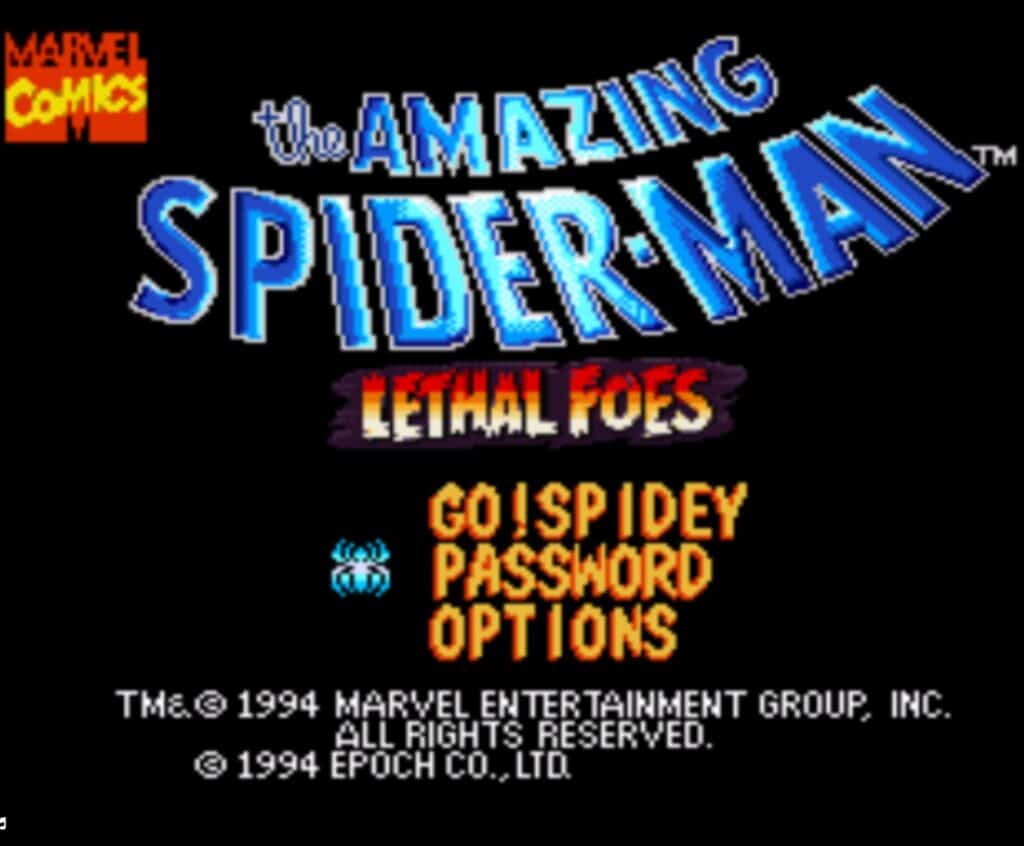
The Amazing Spider-Man: Lethal Foes (1995)
A Japanese-only release on the Super Famicom, this is the first Amazing Spider-Man game that LJ didn’t develop. The game received poor reviews on release and implemented gameplay mechanics that limited player engagement. Things like timed levels were included, making it so players had to reach the checkpoint in time or fail. However, combat and web-swinging are responsive and fun. With items to collect on each level, removing the timer, which rushes players to get to the end, would have been beneficial. While it’s relatively unknown, it’s a solid game that Spider-Man fans would enjoy playing.
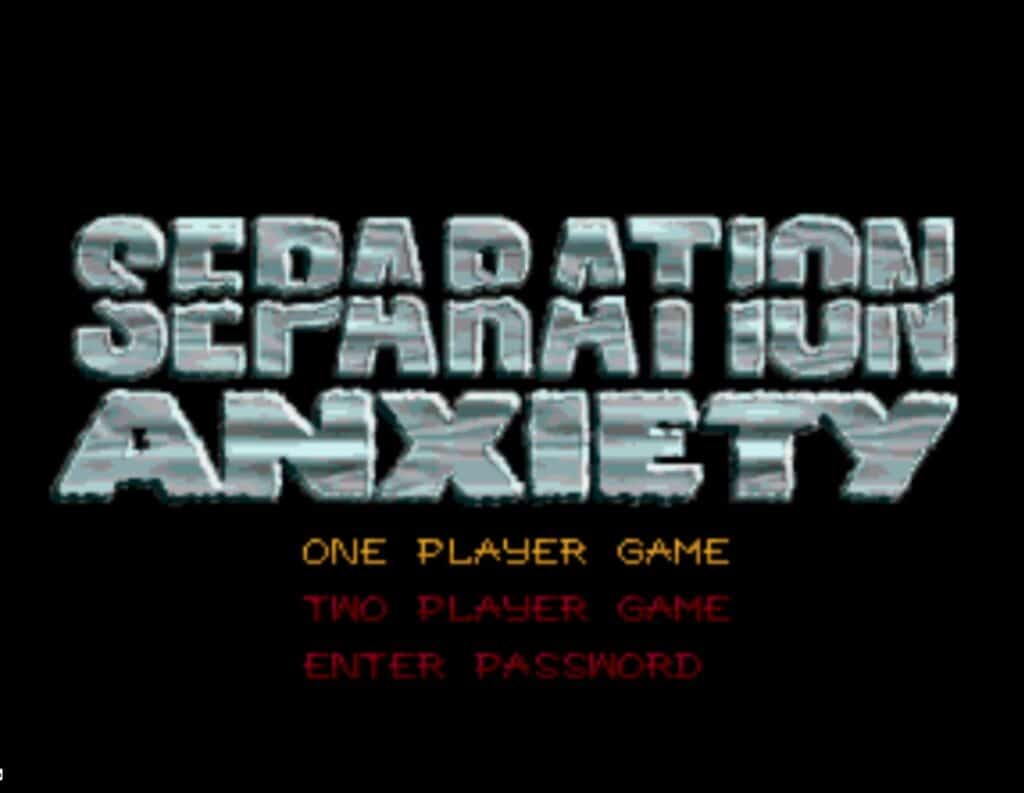
Venom/Spider-Man Separation Anxiety (1995)
Venom/Spider-Man Separation Anxiety is the sequel to Spider-Man Venom Maximum Carnage. Despite being developed by the same studio and released on the SNES, the game has a noticeable downgrade. Sprites lack detail, the perspective is obscure, the gameplay is more repetitive, and the game lacks imagination overall. Critics at the time agreed that the game wasn’t any fun and lacked depth. Fans called it out for being a cash-grab that relied on the original game to help sell copies. While it does follow comic storylines, there were fewer cutscenes than in the first game, which hurt the plot.
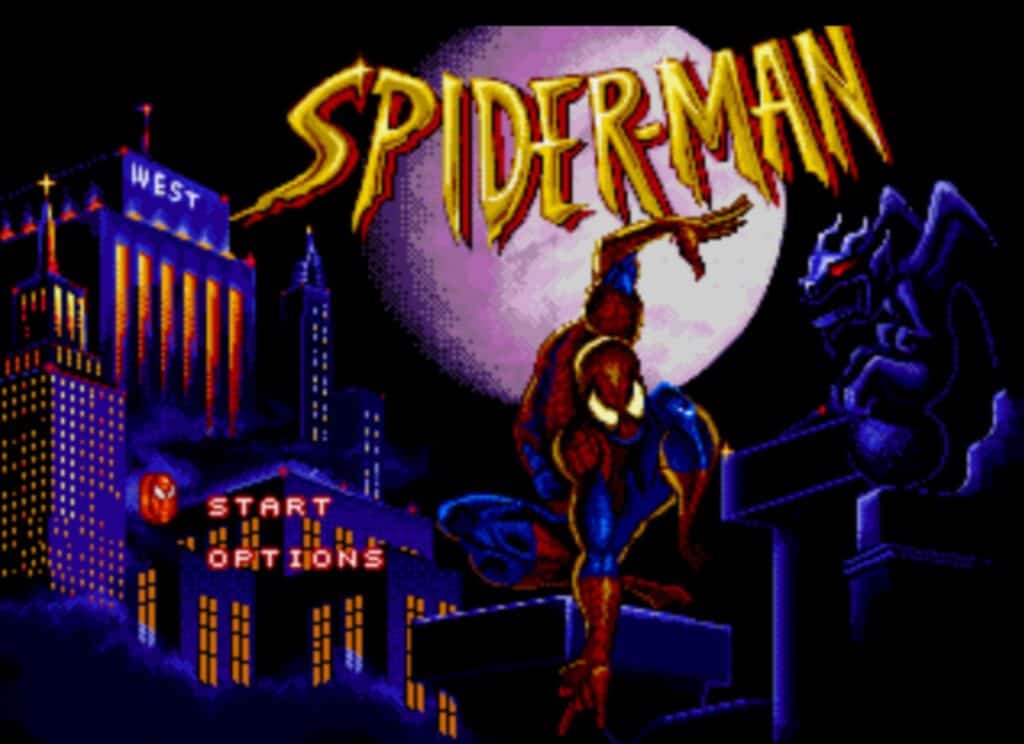
Spider-Man (1995)
Spider-Man (1995) is based on the animated television show of the same name. The game features six levels to play through, with some hidden rooms and cameo appearances. However, it is often criticized for being more of a puzzle game than an action. Some levels feature overly complex puzzles and enemies that are required to progress the game. Players have to resort to walkthroughs or perform trial-and-error combinations on the off chance they get it correct. Overall, the game is average and doesn’t excel at any one thing but it still gives a solid game for fans to enjoy.

The Amazing Spider-Man: Web of Fire (1996)
The Amazing Spider-Man: Web of Fire Is a North American exclusive for the Sega 32X. The side-scrolling game follows Spidey as he battles against the terrorist organization Hydra. While the combat and gameplay were fairly average and gave a decent Spider-Man experience, the game is largely forgotten about. The game was released at the end of the 32X lifecycle, right after Sega announced they would no longer support it. Due to this, critics didn’t review or discuss the game, and it was cast aside. However, its limited run made the cartridges more valuable in the future, with some fetching hundreds of dollars.
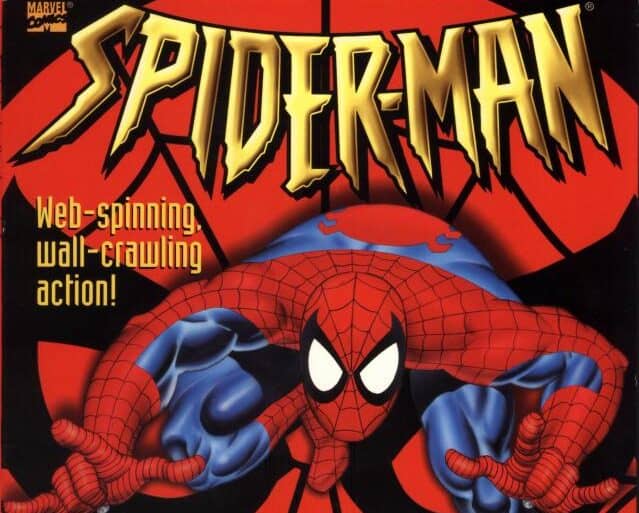
Spider-Man: The Sinister Six (1996)
Unlike Spider-Man: Return of the Sinister Six (1992), Spider-Man: The Sinister Six (1996) was only released in North America and Germany on MS-DOS. The game is largely forgotten about and has no online presence. Its gameplay is fully voice-acted and animated but is mocked due to its cheesy dialogue, obscure soundtrack, and boring gameplay. It’s cited as the worst Spider-Man game ever created. However, players do get to play as Peter Park, who converses and solves puzzles, which offers a unique take not often seen in games from this time.
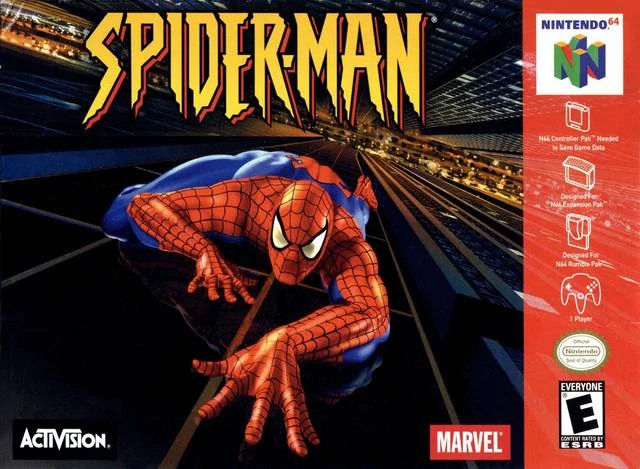
Spider-Man (2000)
Spider-Man (2000) is the first 3-D game in the series, first released on the PlayStation 1. It was also the first title released in four years, making expectations that much higher. The story follows Spider-Man as he tries to clear his name after being framed by a doppelganger. Players can traverse the environments with web-swinging and wall-crawling. It also features more in-depth mechanics such as objectives, side missions, and powerups.
The game was praised during its time for being a revolution in the superhero genre, as it provided solid mechanics, an interesting story, and engaging characters. Because of its three-dimensional nature, fans got to experience Spider-Man like never before. One criticism the game holds is that webs do not require solid surfaces to swing from, with webs attaching to open air in the sky.
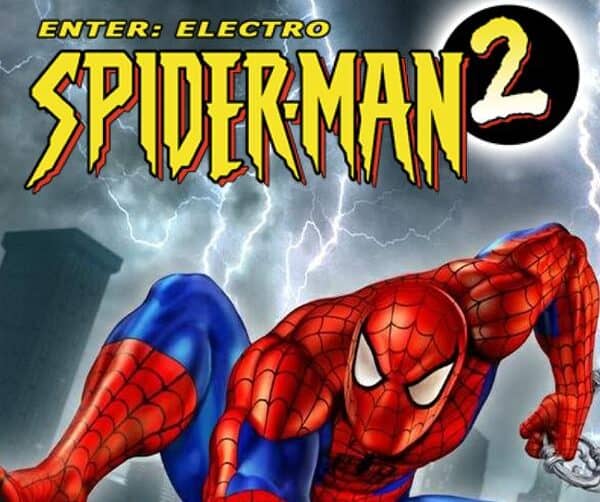
Spider-Man 2: Enter Electro (2001)
Spider-Man 2: Enter Electro is the sequel to Spider-Man (2000) and was released on the PlayStation 2. The game improved upon every aspect of the first game, including ground levels, as the first game took place on top of skyscrapers. More mechanics, like Web Balls and the ability to use ice and electricity with webs, were added. Although the game wasn’t an open-world experience, it gave gamers larger areas to explore. It’s a worthy successor and is beloved by fans to this day.
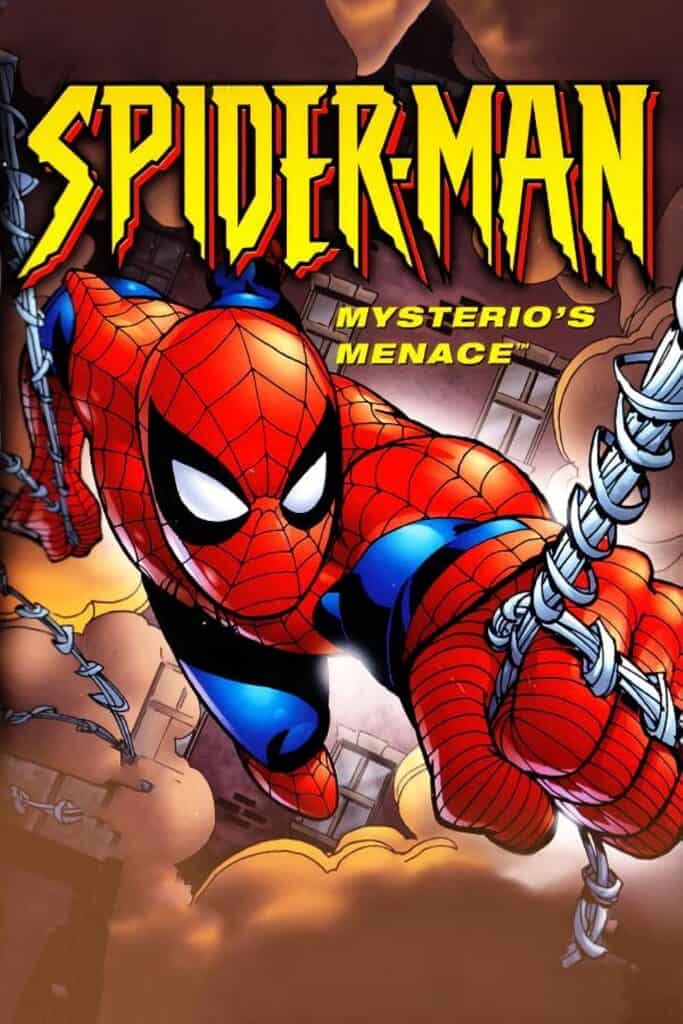
Spider-Man: Mysterio’s Menace (2001)
A standalone sequel to Spider-Man (2000) and Spider-Man 2: Enter Electro (2001), Spider-Man: Mysterio’s Menace was released for the Game Boy Advance. The game takes place a few months after the events of the second game. While it doesn’t offer the 3D graphics and environments from the previous installments, the sprites are colorful and highly detailed for the system. It was met with average reviews on release but received well by fans who enjoyed the Spider-Man experience they could have on a portal system.
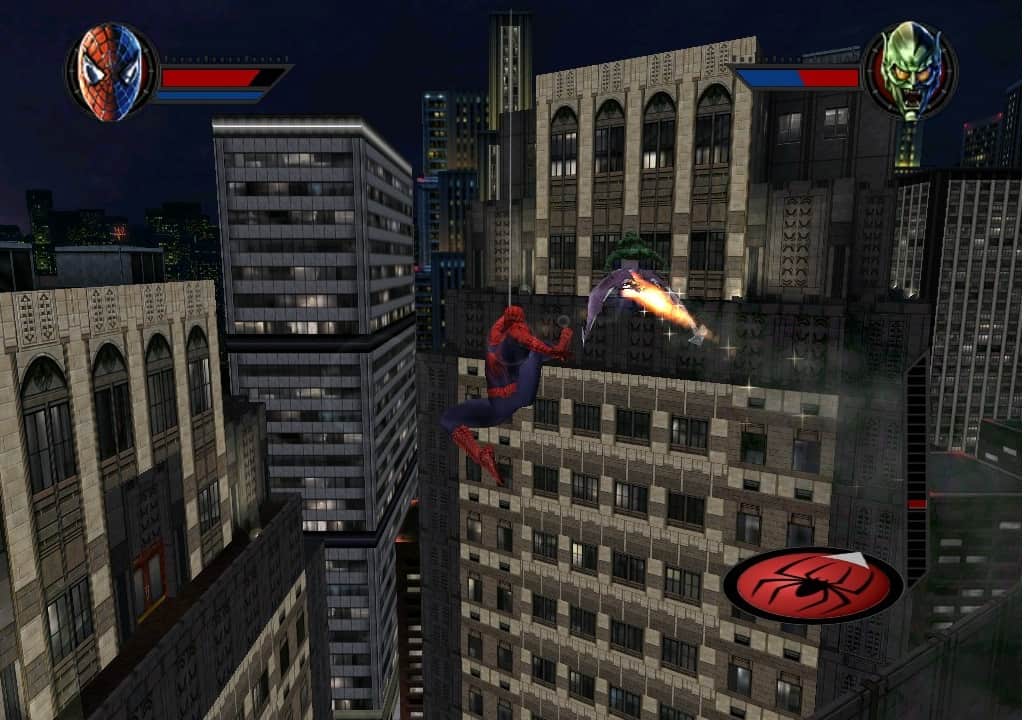
Spider-Man (2002)
Based on the 2002 film of the same name, Spider-Man follows the same plot while adding new characters and storylines. The graphics and cutscenes were beloved for their realism but did fall short on playtime. Critics agreed that the game needed to be longer and could be completed in three hours. It also still required players to follow linear missions with no room for exploration. Plus, the web-swinging mechanics weren’t improved as they attached to the sky and open air. However, fans fondly look back on this game as it was a new step forward in the franchise.
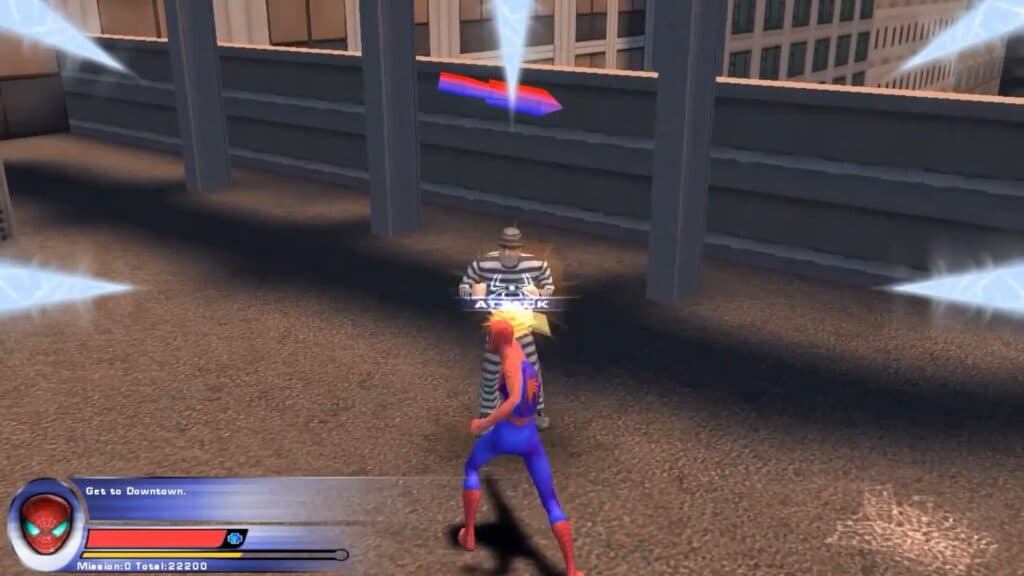
Spider-Man 2 (2004)
Often cited as one of the best Spider-Man games, Spider-Man 2 gave players an experience like never before. The game was the first in the series to offer players a free-to-roam open-world sandbox. Missions could be completed anytime, with random events occurring as players explored New York. It has been praised for its realistic city scale along with webs that need to be attached to a solid surface. Like the original, it is based on the film of the same name but has additional characters and plots. In addition to its revolutionary mechanics, web-swinging is said to be the best due to its responsiveness and the pure fun players get from swinging around the city.
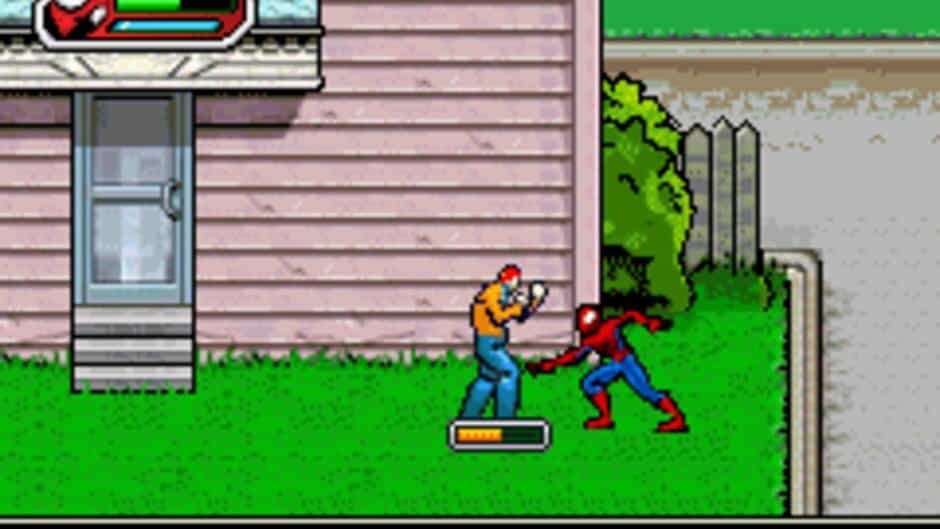
Ultimate Spider-Man (2005)
Ultimate Spider-Man is based on the comic of the same name and takes liberties in making the game more comic book-like. Like the previous installment, the game features an open world for players to explore and advance at their own pace. Players also get to play Venom, who has his own storyline that crosses over with Spider-Man’s. The game received average reviews for its appealing graphics but criticized the repetitive nature of the gameplay mechanics. It is generally considered great among fans of the franchise.
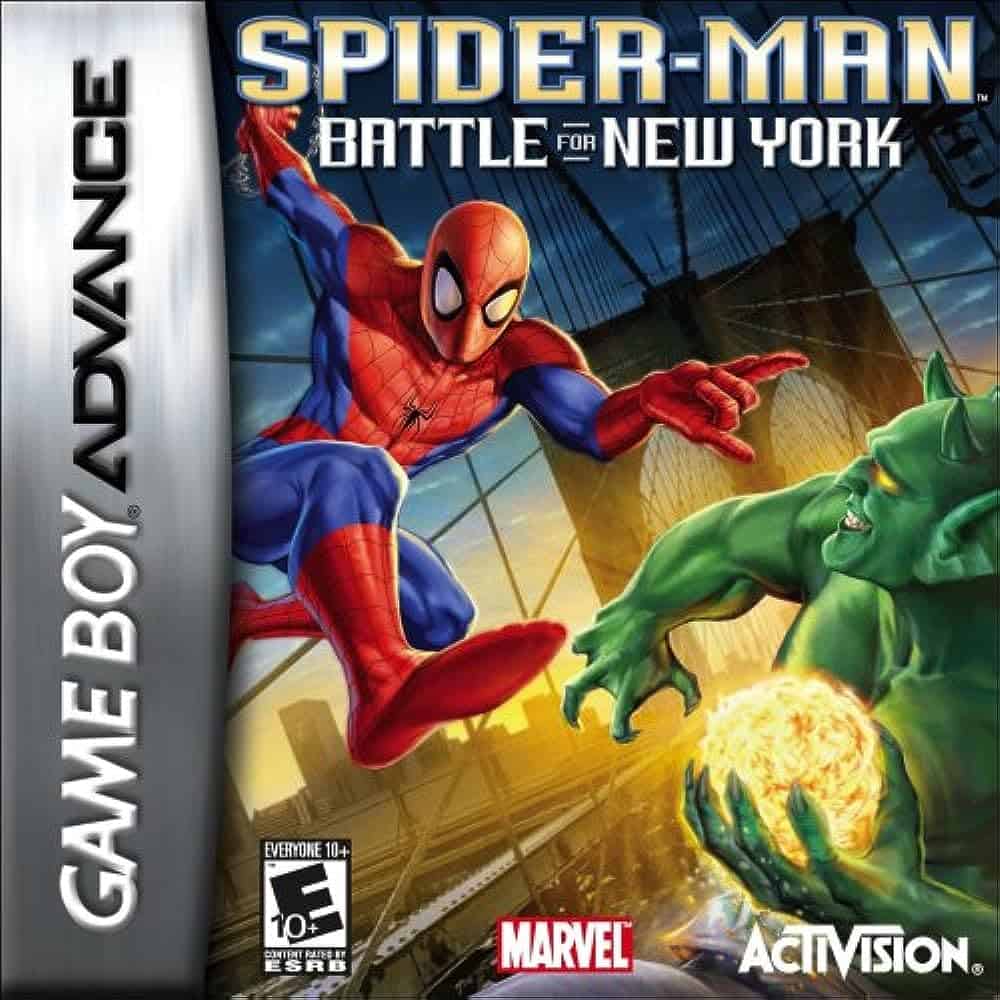
Spider-Man: Battle for New York (2006)
Spider-Man: Battle for New York is the prequel to Ultimate Spider-Man (2005), which retells Spider-Man’s and the Green Goblin’s first encounter. The gameplay is almost identical to the first game and features a playable Green Goblin. However, the downfall of the game was its release on the Nintendo DS. While Ultimate Spider-Man was released on multiple platforms, the DS is comparatively weak and offers less performance.
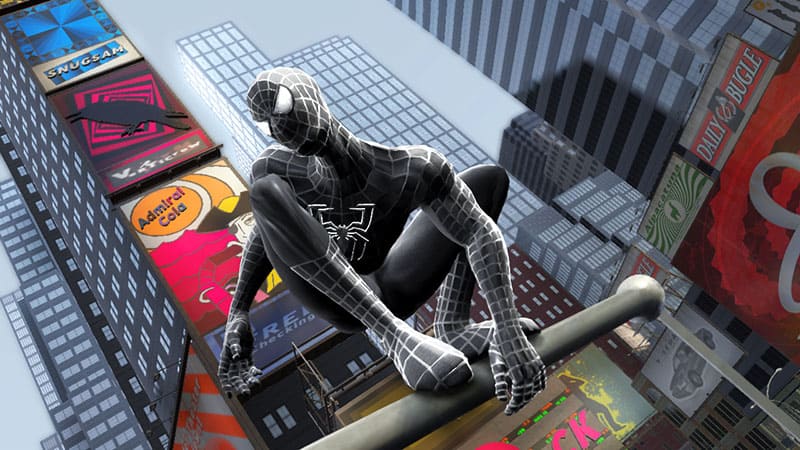
Spider-Man 3 (2007)
Spider-Man 3 is the final game in the film trilogy and loosely follows the plot of the movie with the same name. It was released on multiple platforms, with most having slightly different stories or mechanics. The game follows in the footsteps of its predecessors with its open world for plays to explore but lacks innovation. The story and plotlines have been called into question for being overly complex and featuring too many villains. The graphics are the most realistic and advanced for any Spidey game up until that point. It also includes motion controls while flying, making enemy encounters and moving around the city much more difficult.
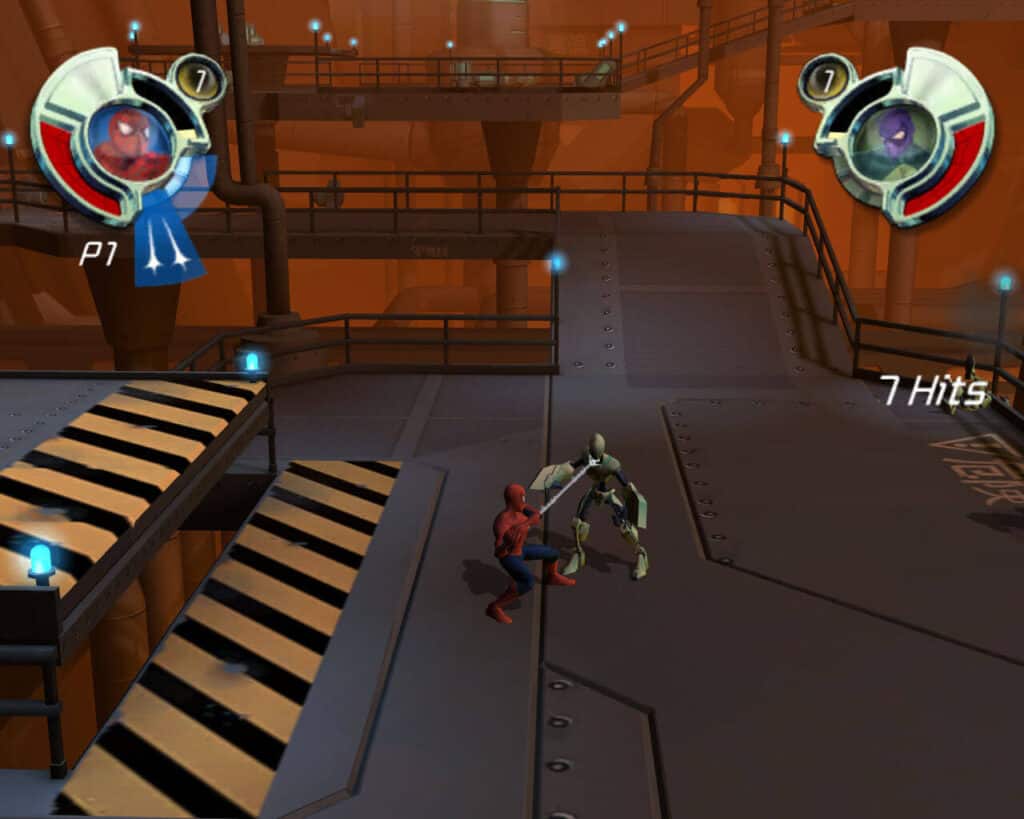
Spider-Man: Friend or Foe (2007)
Spider-Man: Friend or Foe gets back to the beat ‘’em-up nature of previous games while offering a co-op option for players. This is the first 3D beat ‘em-up in the series and borrows characters and designs from the Spier-Man film trilogy. The game fell short to critics and fans for multiple reasons. The first one is that the game lacks challenge and is too repetitive. Secondly, the co-op aspect is nullified when battling against bosses since only the player controlling Spider-Man can fight in them.
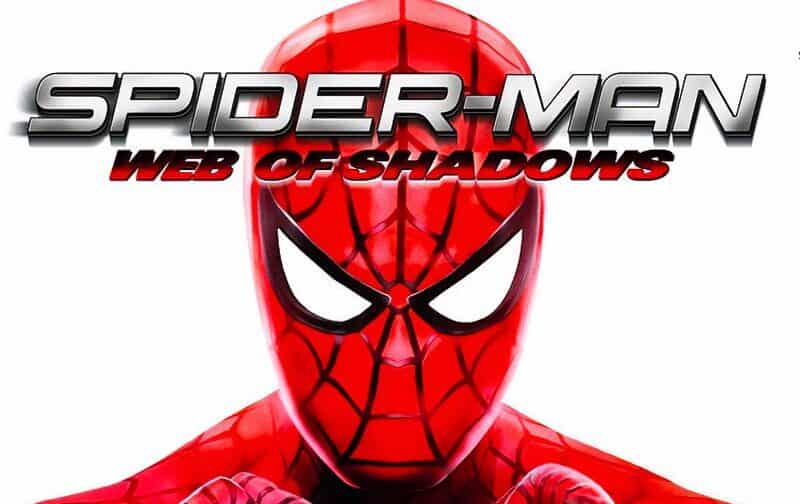
Spider-Man: Web of Shadows (2008)
Spider-Man: Web of Shadows is a darker story than most other Spider-Man games. The plot involves a symbiote invasion of Manhattan, with Spidey teaming up with unlikely allies to stop the threat. Like previous games, the world is open to roaming and exploring, now a franchise staple. Upon release, the game is criticized for its dated graphics, uninteresting story, and the use of quick-time events. While there were many cool moments for fans to enjoy, the game feels more dated than the ones that came before it. We also don’t see much of Peter Parker, with Spider-Man taking up most of the screen time.
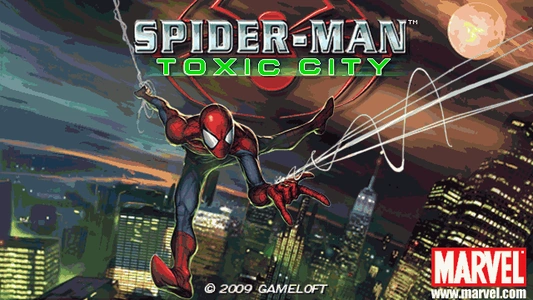
Spider-Man: Toxic City (2009)
Spider-Man: Toxic City is the first phone game in the Spidey franchise. It features 13 missions with additional bonus stages with collectibles scattered around each stage. Players will battle against Rhino, Green Goblin, and Shocker. The game is reminiscent of the SNES and arcade beat em’-ups. However, it was poorly received as reviews called it a “button masher” and “repetitive.” The game does have colorful and vibrant sprites for the characters and enemies but lacks depth and engagement.
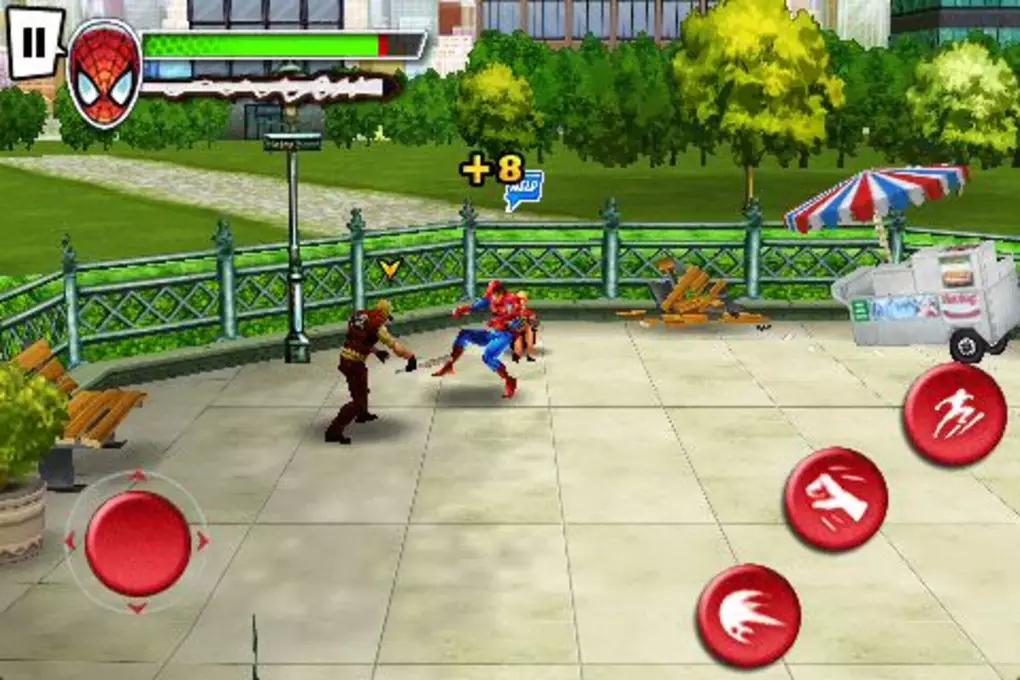
Ultimate Spider-Man: Total Mayhem (2010)
Ultimate Spider-Man: Total Mayhem is another mobile game developed by Gameloft, who made Spider-Man: Toxic City. The game had more depth and mechanics and improved many of the functions from the first game overall. It had impressive graphics for a mobile game at the time and had over 20 million downloads. Like other installments, it was a beat ‘’em-up featuring Spidey’s rouges gallery of villains. It was regarded as one of the best mobile games at the time and was equipped with voice acting and animations to tell a comprehensive story.
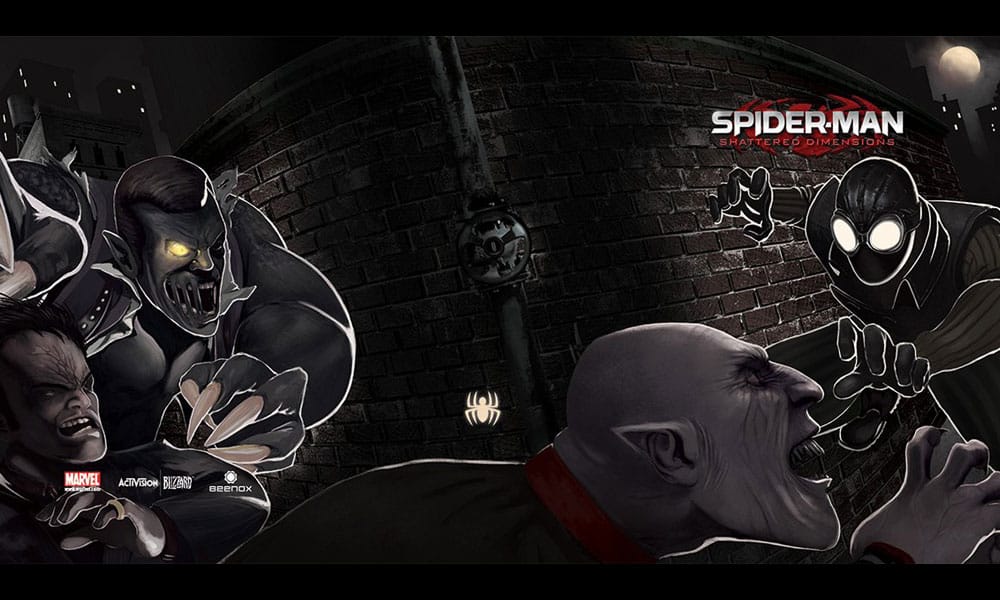
Spider-Man: Shattered Dimensions (2010)
Spider-Man: Shattered Dimensions brings a new take to the Spider-Man franchise by having players control four different Spider-Man characters. Each of these characters is from a different universe and is brought together to restore order and balance to the multiverse. The game features celebrity voice actors and received good reviews on release. The game has stood the test of time as it was an inspiration for Spider-Man: Into the Spider-Verse. With the multiverse being more popular than ever before, fans have looked back fondly on the game for its story.
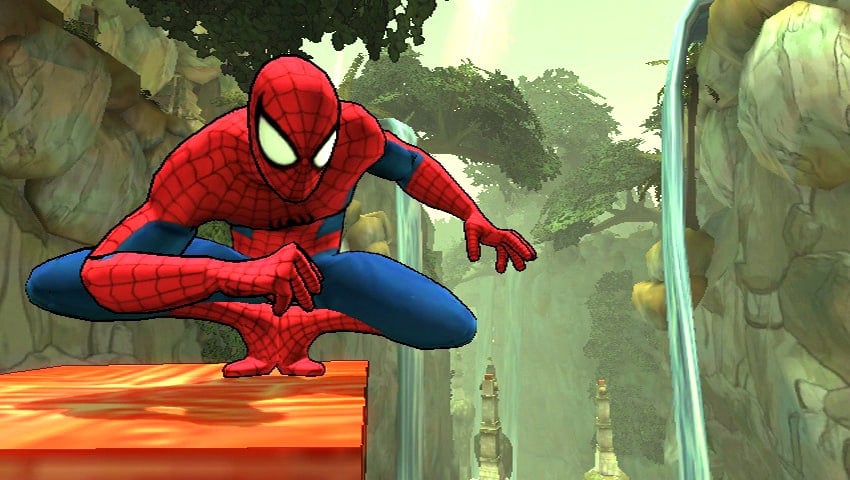
Spider-Man: Edge of Time (2011)
Spider-Man: Edge of Time is the sequel to Spider-Man: Shattered Dimensions. It follows a cast of Spider-Men traveling across time and space to prevent Peter Parker’s death. It also features cause and effect, meaning that actions taken in one universe will affect others. While the first game received positive reviews, critics and fans noted this sequel lacked compared to the original. The story is engaging and fun but ultimately doesn’t live up to the original story and feeling.
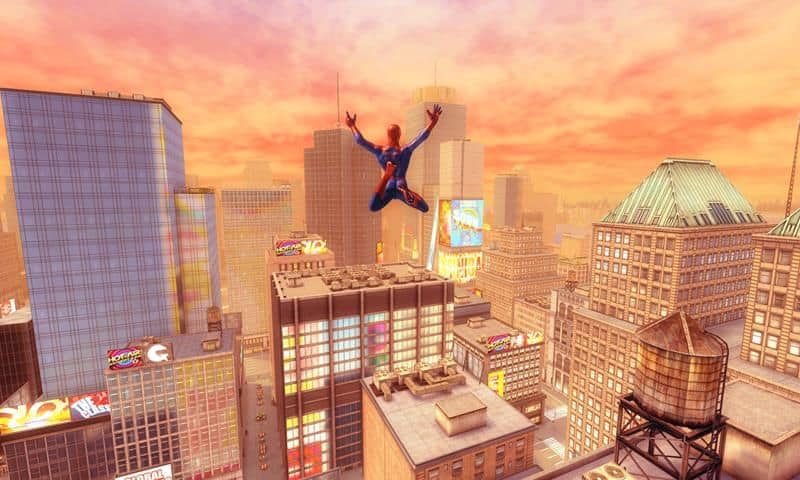
The Amazing Spider-Man (2012)
The Amazing Spider-Man is based on the film of the same name featuring Spider-Man, Gwen Stacy, and Doctor Connors. It was released on most major platforms then, resulting in major differences between editions. The 3DS and Wii versions are lacking in open-world design and instead have more linear missions. While it did have good reviews for its controls and combat, the story and difficulty were regarded as poor. The game also returns to webs attaching themselves to the sky, a problem a decade before.
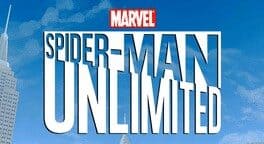
Spider-Man Unlimited (2014)
Spider-Man Unlimited was an endless runner mobile game that was discontinued in 2019. The game features Spider-Man running through New York, trying to get as far as possible. The Sinister Six made appearances as the villains of the game. It had over 30 million downloads, a dedicated player base, and positive reviews. It is unlike any other Spidey game out there but is hard to find and play since its removal from the app store.
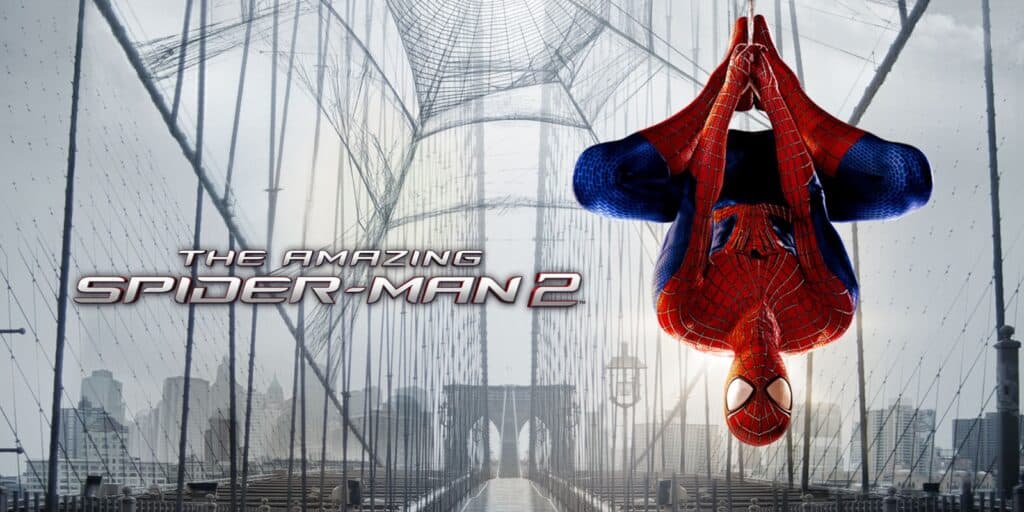
The Amazing Spider-Man 2 (2014)
The Amazing Spider-Man 2 is the sequel to The Amazing Spider-Man (2012) and is based on the film of the same name. The plot mainly revolves around the film story with differences depending on the platform played on. It is basically identical to the first game, which is part of why it wasn’t well received. Although the open world was large and had many side missions, it lacked originality and was a poor sequel.
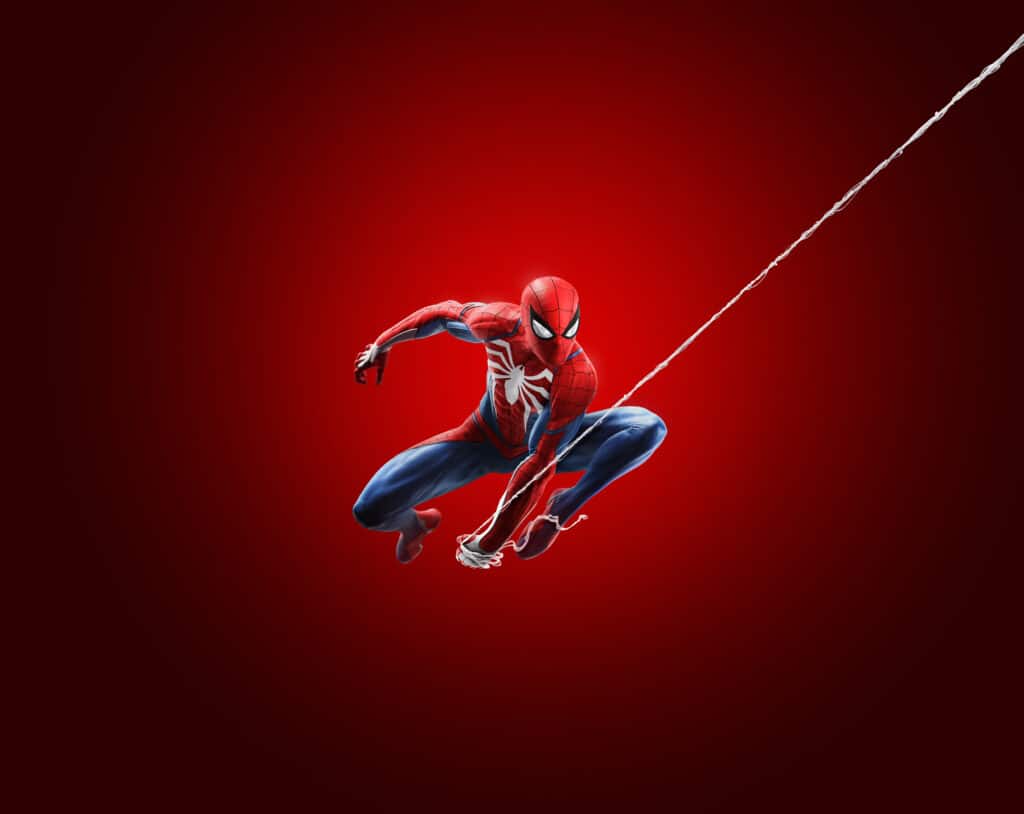
Marvel’s Spider-Man (2018)
Marvel’s Spider-Man is cited as the best game in the Spider-Man franchise. The game features engaging characters, villains, a story, and varied side missions. The web-swinging was inspired by Spider-Man 2 (2004), offering the best feeling while playing. It is one of the most successful Spider-Man and most successful video games ever created. Fans noted that the game was a breath of fresh air and brought the character back into the mainstream.
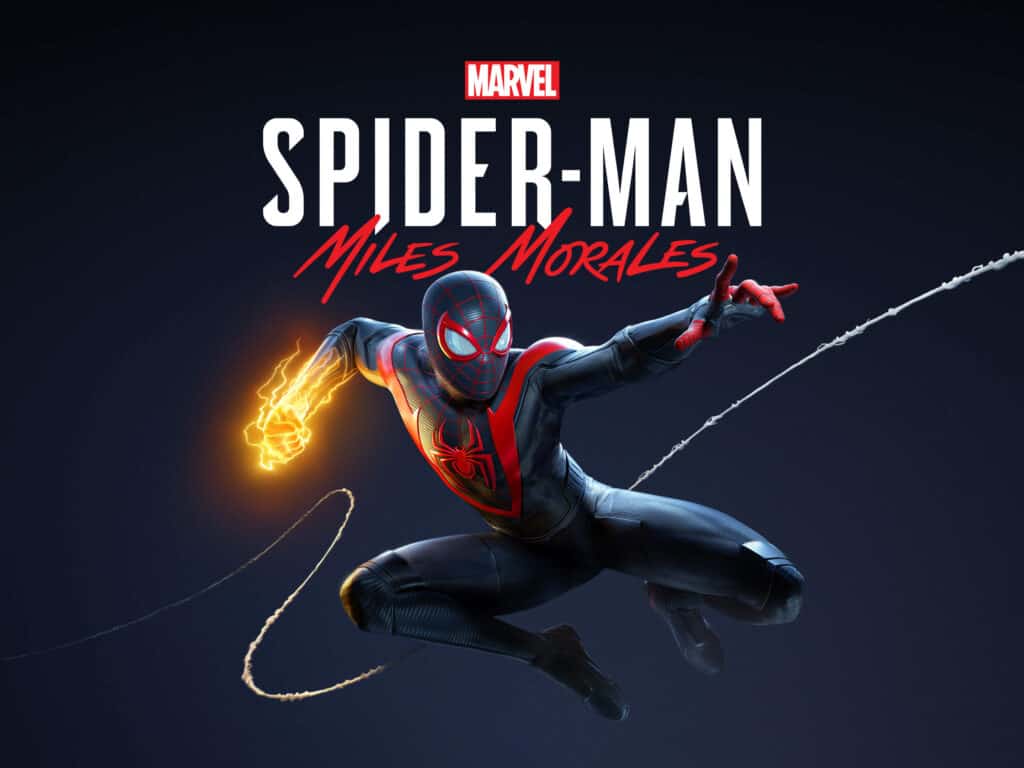
Marvel’s Spider-Man Miles Morales (2020)
Marvel’s Spider-Man Miles Morales is the spinoff of Marvel’s Spider-Man (2018). It follows Miles Morales as he attempts to balance his superhero and civilian life. It features every great aspect of the first game and provides a new character to experience that isn’t Peter Parker. While the game is highly rated, some fans have pointed out that it feels too short, as it was less than half the length of Marvel’s Spider-Man (2018). The graphics are highly realistic, and Miles offers new abilities, movement, and style for players to experiment with and enjoy.
